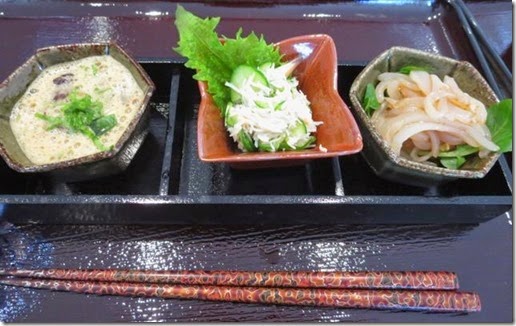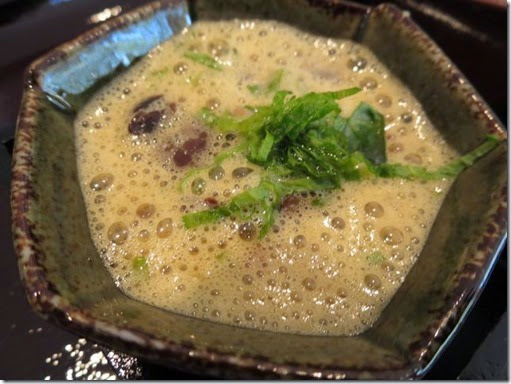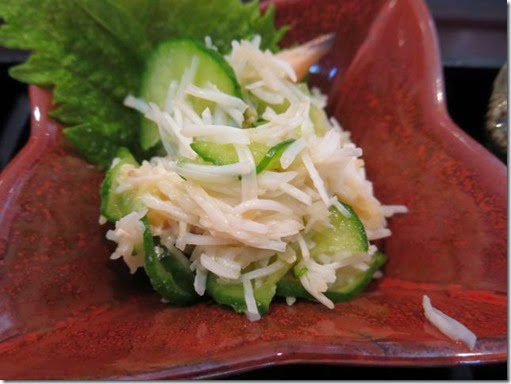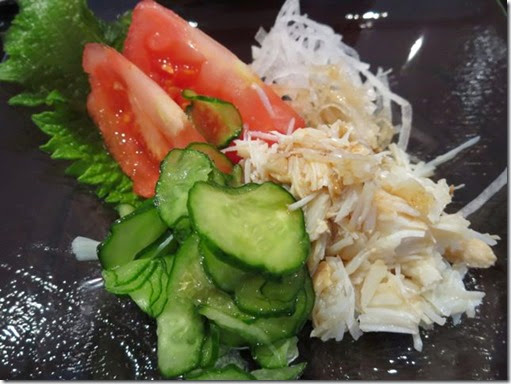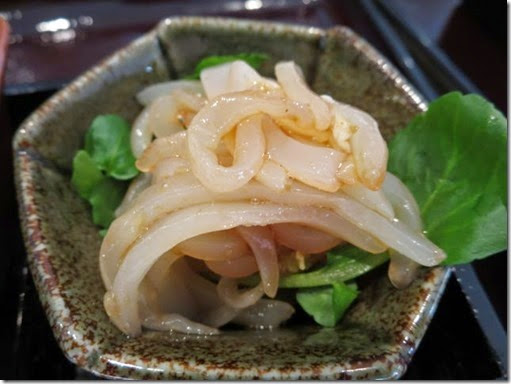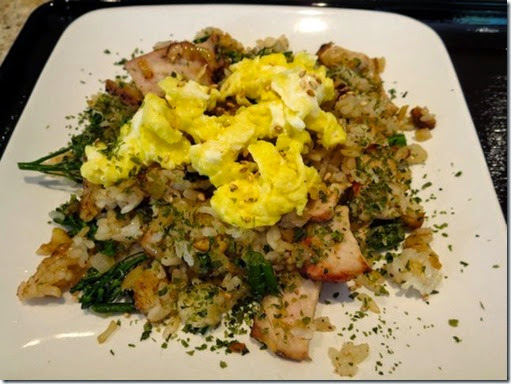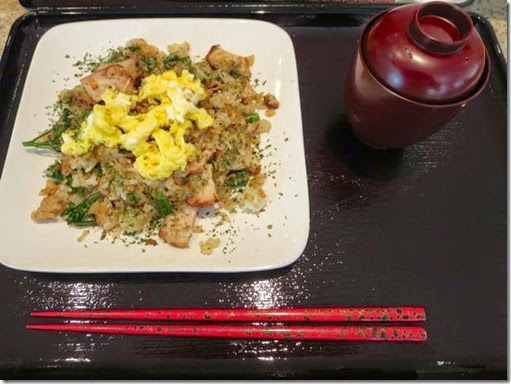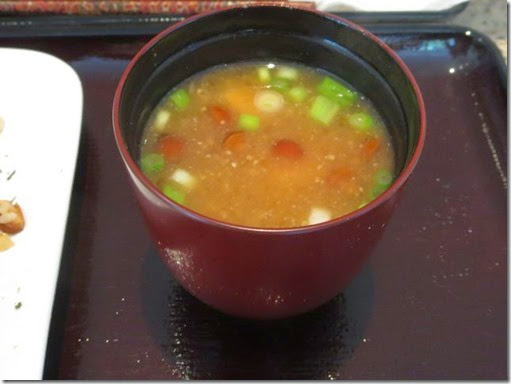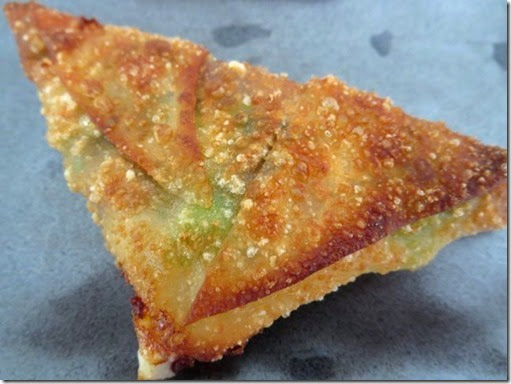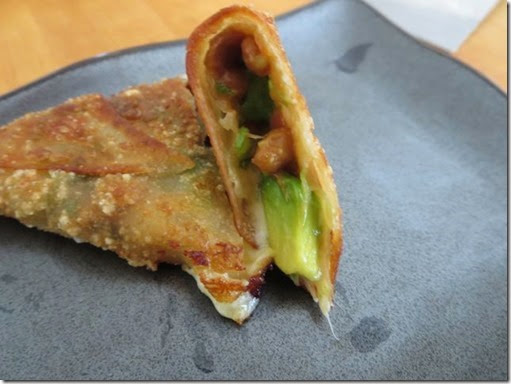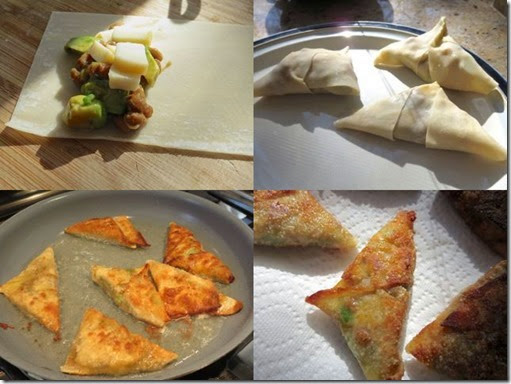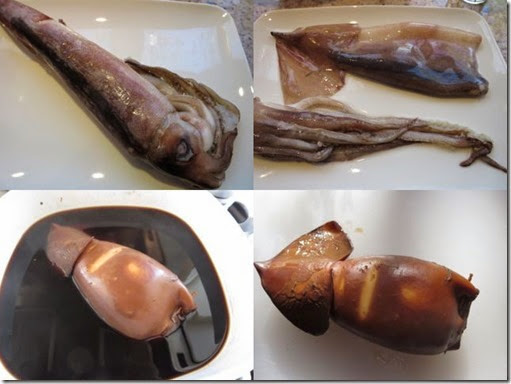"Chiai" is the very dark portion of tuna which I removed from the blue fin tuna toro block we got. I marinated the chiai in equal amounts of soy sauce and sake in the refrigerator. As before, I just mixed nattou, marinated chiai tuna, and egg yolk (Pasteurized shell egg). I garnished it with thinly cut perilla. Chiai usually tastes gamey and strong but this preparation makes it much more palatable.This dish is pretty high on the slime factor scale so it is not for the faint-hearted or for consumption by “J-Q public” particularly in the United States but Yamada Taro 山田太郎 (equivalent to John Q. Public in Japan) may like it. But we (including my wife) certainly like it.
The second is a very standard "sunomono" 酢の物. The crab meat came from Catalina Offshore products. We have never tried this before but, again, because some items we wanted such as sea urchin or amaebi were not available, I decided to try this cooked crab meat. This was a great disappointment. It was all claw meat of stone crab but it was not easy to remove the hard shell (only tip of the claws) and thin cartilage. It all came out as small pieces. We can get much better packaged lump crab meat at our local grocery store. In any case, we had a Japanese cucumber for a change and made this crab and cucumber sunomono. As usual, I thinly sliced the cucumber, salted it and let it stand for a few minutes and then wrung out the moisture. I dressed it with sushi vinegar with splashes of yuzu juice (from the bottle).
The below is another version I made the day before with addition of tomato and daikon threads which was dressed in ponzu (leftover from garish I used for tuna sashimi).
The below is a packaged and frozen sashimi of squid I got from our Japanese grocery store. I simply dressed it with soy sauce and wasabi and served on the top of water cress.
These are nothing special or new but good drinking snacks to start with your cold sake.

